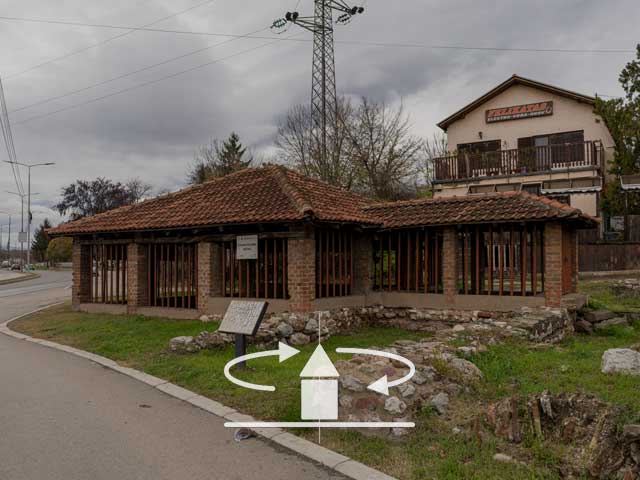BYZANTINE CRYPT
Protected cultural monument, listed as SK 1012 with the Republic Institute for the protection of monuments of cultural heritage.
BYZANTINE CRYPT Pantelej municipality
Where is it
Byzantine crypt with martyrium is located in the city of Nis, Pantelej municipality, in the city neighborhood of Jagodin mala, on the right bank of the Nišava river.
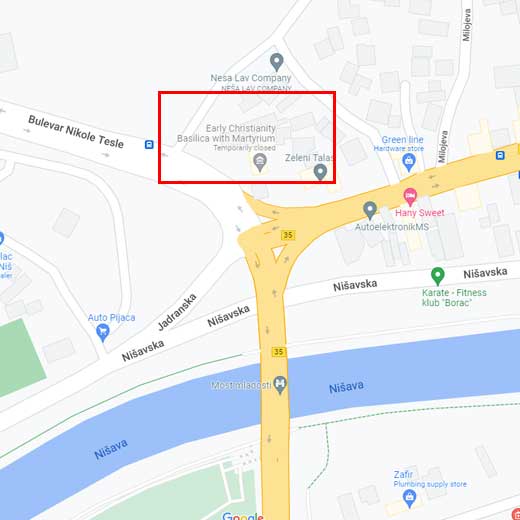
Research
During the archaeological research in Jagodin mala in 1932/33, Adam Oršić Slavetić discovered a small three-naval basilica with a crypt „a mausoleum, especially finely made of yellow bricks“. In 1947, a protective roof was built over the uncovered crypt. The research continued in 1952/53 and on that occasion, the larger part of the basilica was discovered. In order to determine the chronology and perform conservation, final research was performed in 1962 and 1967. The three-naval basilica was presented in situ although a part of the object remained un-researched because it is located under the modern buildings.
Dating
Early Christian basilica with martyrium is dated in late IV or V century.
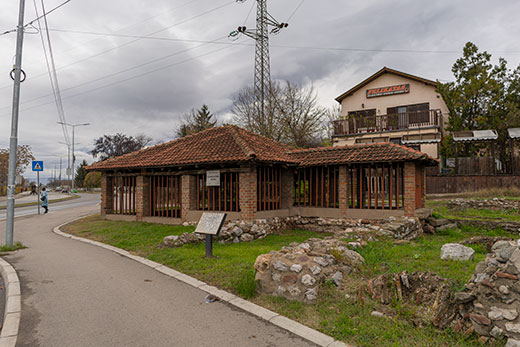
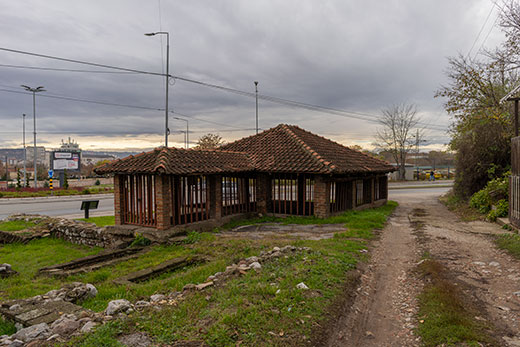
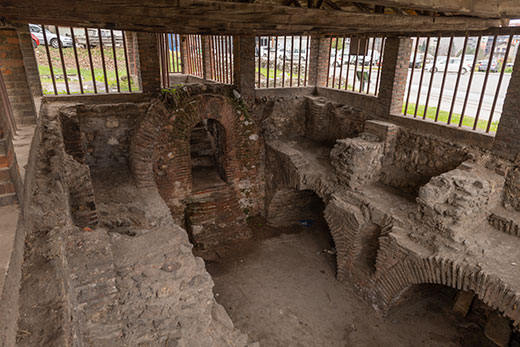
Description
Martyrium is a building of rectangular base 8 x 8,5 m. On the western wall there is a small semicircular niche with two smaller rectangular ones on each side. There is a small window above the middle niche. The walls are made of brick and plastered with waterproof material. Walls are ornately decorated both on the inside and out.
The inside is divided into four vaulted arcosolia, two on the north and two on the south side, inside which the deceased used to be buried. Each arcosolium had a railing made of massive stone slabs, whose bases are still visible today.
From the crypt, there are 12 steps leading to the vertex of the basilica, thus functioning as a dromos.
Following the ancient tradition, the martyrium had an overhead construction.
The remnants of the basilica were discovered on the eastern side of the martyrium; the basilica is in fact a three-nave building with a semi-circular apse on the east and a vortex on the west side. Its dimensions are 23,2 x 17 m. It was built in brick and stone alternately. The central nave, significantly wider than the lateral ones, was divided with pillars. The inside walls of the basilica were covered in mosaics, marble plating and painting,
In the south part of the vortex, a stone block was discovered, with the function of performing sacrifice at the time of marking the martyrdom of oldest Christian martyrs.
Above the conserved part a construction of lattice walls was erected, so that the inside of the martyrium can be seen from the outside
The city of Niš, ancient Naissus, was famous for its martyrs in the Christian world of that time. Basilica with martyrium enables the study of the development of sacral architecture following the development of the cult of the martyrs.
During the research, a large number of graves were discovered within the basilica, over 60. Church dignitaries were buried there, persons who earned privileges in their lifetime.
A special feature is a lead children's sarcophagus discovered in front of the entrance to the martyrium. The sarcophagus had a relief decoration: Golgotha cross and Crucifixion of Christ, symbols of the resurrection.
Јулка Кузмановић Цветковићархеолошкиња
